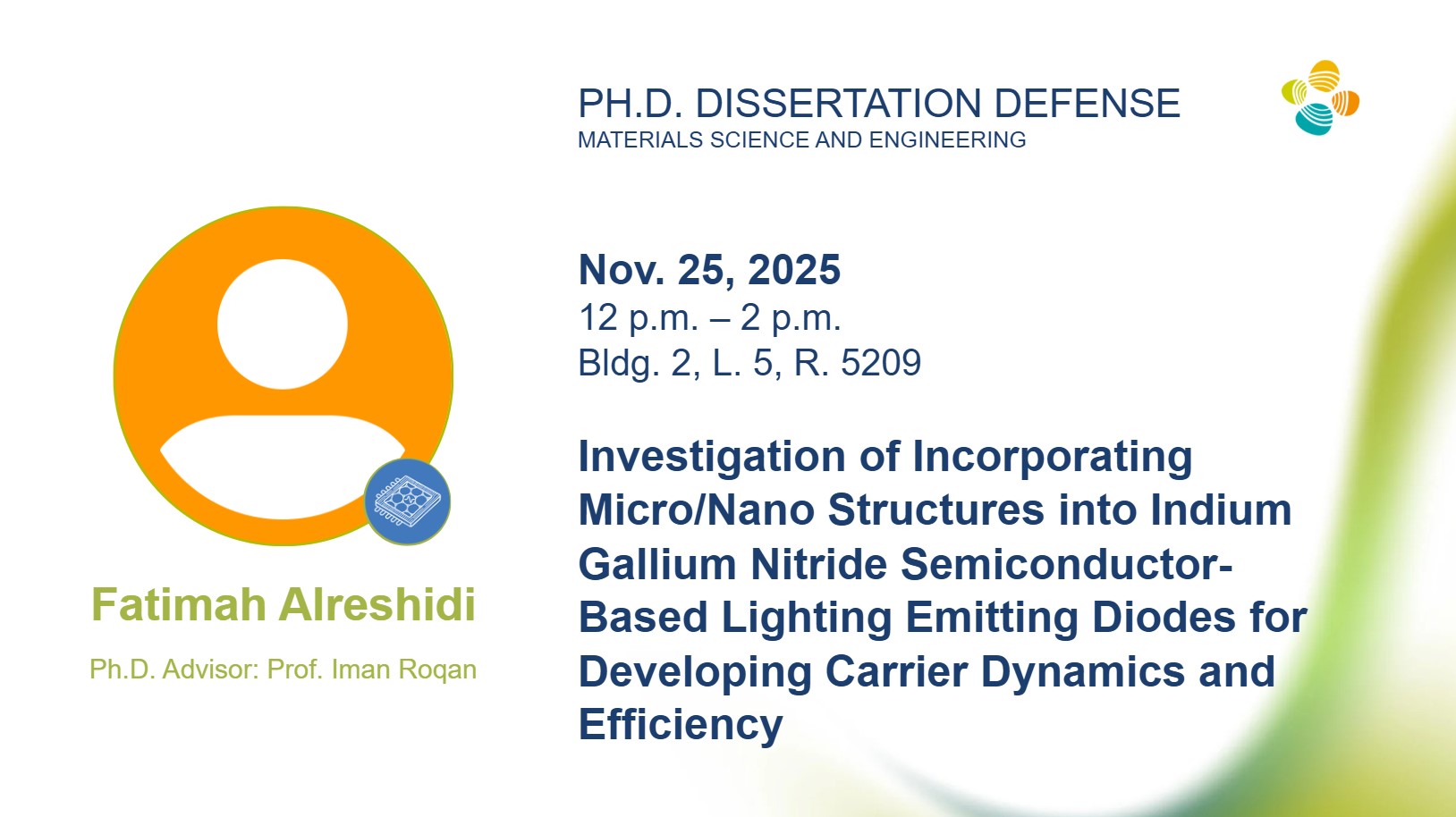Nov 2025
Investigation of Incorporating Micro/Nano Structures into Indium Gallium Nitride Semiconductor-Based Lighting Emitting Diodes for Developing Carrier Dynamics and Efficiency

Committee Members Information
- Ph.D. Advisor: Professor Iman Roqan
- Committee Chair: Professor Nazek Elatab
- External Examiner: Professor Emilio Nogales Díaz
- Committee Member: Professor Alfonso Caraveo
Abstract:
III-nitride semiconductors, particularly InxGa1-xN/GaN-based lighting emitting diodes (LEDs), have attracted significant scholarly and practitioner attention due to their direct and tunable bandgap, high thermal and chemical stability, and broad optoelectronic applications, ranging from optical sensors and lighting to micro-displays. However, InGaN-based emitting devices face several challenges that undermine their efficiency such as high threading dislocation (TD) density and presence of internal piezoelectric field, primarily originating from the large lattice mismatch between GaN and foreign substrates. These shortcomings have motivated this dissertation, aimed at elucidating the carrier dynamics of light-emitting devices as a crucial factor for enhancing their efficiency.
This dissertation focuses on the potential novel approaches for mitigating the aforementioned issues, which are based on the incorporation of micro/nano-structures into InGaN/GaN LEDs to boost the device efficiency. Accordingly, several advanced optical techniques such as time-resolved photoluminescence (TRPL) and advanced structural characterizations—including scanning transmission electron microscopy (STEM) and reciprocal space mapping (RSM)—were adopted to investigate the effect of such approaches on the carrier recombination mechanisms that control optical efficiency.
First, the impact of V-pit carrier dynamics and the number of superlattices (SLs) on the optical properties of InGaN/GaN multiple quantum well (MQW)-based blue LEDs was investigated. The obtained findings indicate that, as the number of SLs increases the size and density of V-pits increase, thereby improving the optical quality. It is also established that V-pit walls act as barriers for non-radiative recombination centers and that V-pits can generate UV/blue emission, as confirmed by cathodoluminescence (CL). Next, the effect of strain management through a combination of two layers of strain relaxation structures situated underneath the MQWs on TD density and V-pit size was examined. The objective of these analyses was to explain the mechanisms behind efficiency improvements and the origins of efficiency droop in each structure. In addition, the impact of a novel plasmonic structure on the InGaN/GaN MQW blue LED carrier dynamics enhancement was explored. The obtained results indicate that further optical efficiency enhancement can be attained by incorporating a platinum layer into the device structure. Finally, the role of a InGaN/GaN micro-pyramid structure comprising MQWs obtained by selective area growth on semi-polar GaN substrates in mitigating the quantum-confined Stark effect (QCSE) that limits the optical efficiency was investigated. Carrier dynamics studies confirm the formation of several MQW structures, resulting in different emission characteristics across the micro-pyramids.